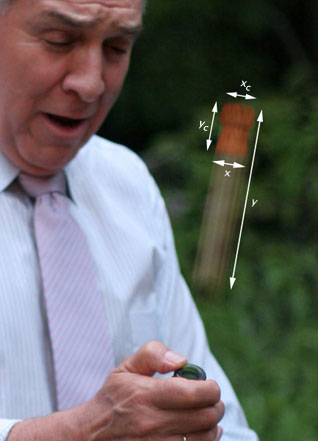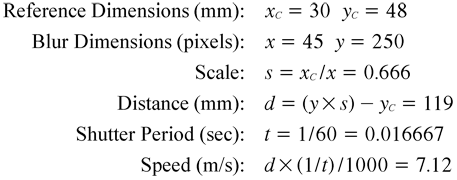 |
We normally see a photo as a visual record of a discrete moment in time. But cameras record continuous motion throughout the shutter period, which is typically between 1/8000 and several seconds. Of course, this is most apparent at slower shutter speeds with moving subjects; we've all had low light photos ruined by excessive motion blur. We may also encounter motion blur when photographing fast moving objects such as cars or birds, even at high shutter speeds. Experienced photographers use this effect to their advantage in order to accentuate motion and add life to the scene.
We may also use this effect for more pragmatic purposes. Given three variables: reference dimension, distance of travel, and shutter period; we are able to calculate the speed of the subject...

First, the photo's scale is calculated by dividing the width of a champagne cork by the width of the cork's blur. Next, distance is found by adjusting the blur length to scale and subtracting the cork length. Shutter period is encoded in the image metadata and timing is generally very accurate. Finally, speed is calculated by multiplying distance and the inverse of the shutter period, which yields the distance traveled in one second; 7.12 m/s, 25.6 km/h, or 15.9 mph.
|







